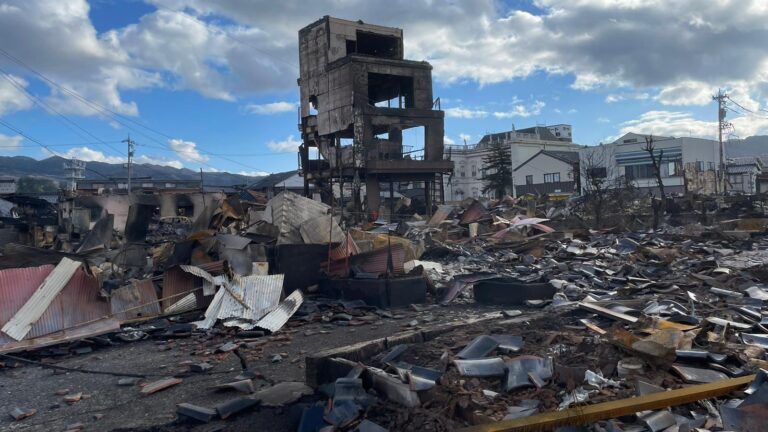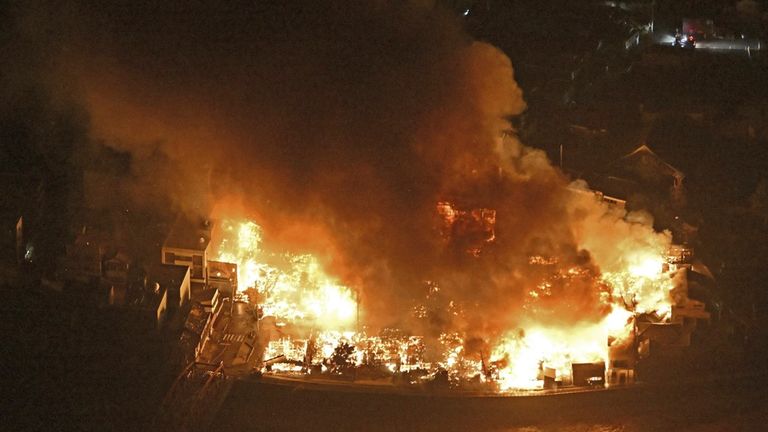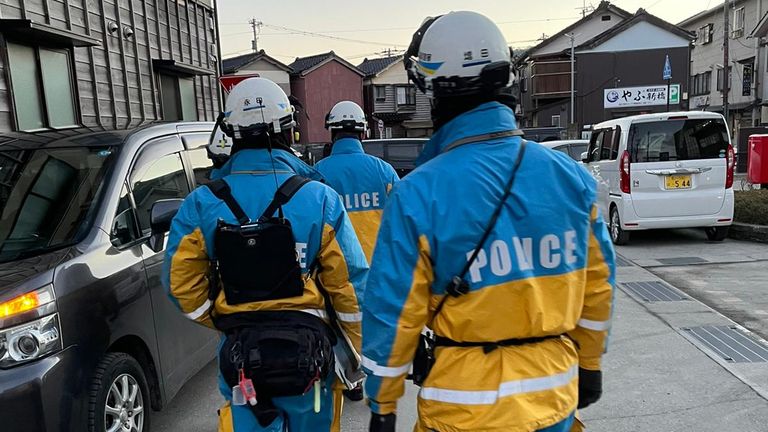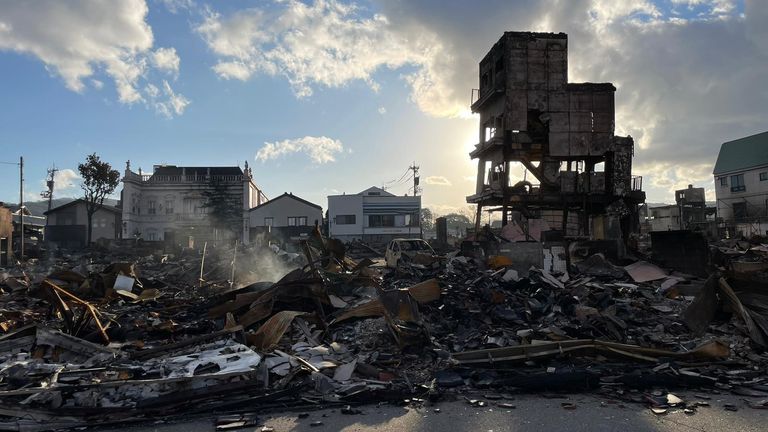In the city of Wajima, there is barely a building untouched.
Home after home lies crumbled as rubble, their traditional Japanese roofs smashed down to ground level.
Even those that are still standing are visibly not structurally sound, almost all sit at precarious angles without windows, doors, or walls.
Wajima is at the very heart of the devastation, for a corner of Japan that is currently littered with it.
Down one street, an entire five-storey building lies flat on its side. A solitary man combs through the rubble beneath it with nothing more than a garden rake before sitting across from the wreckage and weeping into the arms of his son.
But the very worst of the devastation can be found in an area of the city that was, until this week, an old market district, a place where small businesses interspersed with traditional wooden houses.
It was here that the quake caused a devastating fire, that ripped through block after block.
It is now not much more than a mangle of smouldering ash, broken glass, and twisted metal. The frames of a few larger buildings tower hollow over the rest, power lines dangle untethered.
Survivors are gathering here to survey what they’ve lost, we see one man desperately clawing at a small area with his hands.
It is here we meet an elderly lady of 83, she didn’t want to give us her name, but she showed us where her house had once stood.
Read more:
Villagers pick up the pieces after devastating earthquake
Japan residents recall moment earthquake hit
She describes how she survived the initial earthquake, only to lose everything just a few hours later to the flames.
It’s hard to imagine what she’s been through, she heard her trapped neighbors calling for help, but she couldn’t do anything, the flames were spreading and she had to evacuate.
Five of those neighbors died in the fire, “I feel so terrible I couldn’t help” she says, “At the moment I am still in shock, I think it will hit me later, these people were my friends.”
Others also lost their lives here, some because they were heeding tsunami warnings and took shelter in taller buildings which they could then not escape.





